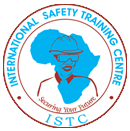
Epidemiologists the world over have identified stigma as a hindrance to the war against any pandemic and COVID 19 is not any different. Stigma to patients suffering from health conditions such as HIV, Tuberculosis, Ebola virus and Zika virus has been observed to interfere with the adoption of preventive measures, timely testing and adherence to treatment. Stigma and discrimination arise because fear and uncertainty that emerge during a pandemic. The end result is hopelessness that drives people towards despair.
In the case of Covid 19, it has not only interrupted the workplace but has affected occupational health in a huge way. Employees who have contracted the virus have been labelled, stereotyped, discriminated against and experienced loss of status because of a perceived link with the disease. This has in turn resulted to a reduction in their productivity and in some cases aggravated those with mental health issues.
As we celebrate this year’s World Safety Day we must refocus our energy in creating safe working environments. As we join hands in fighting the spread of COVID 19, let us ensure that there is no stigma and discrimination of those who have contracted the virus or have been care givers to infected persons.
Each workplace Infectious Disease Preparedness and Response policy must aggressively address stigma and discrimination reduction. It must establish psychosocial support systems to assist those infected/affected by severe acute respiratory syndrome corona virus-2 (SARS-COV 2) in line with this year’s Directorate of Occupational Safety And Health Service (DOSHS) theme of “ Zingatia afya na Usalama Kazini- Komesha Corona”.
Some of the practical measures that workplaces can employ include;
- Avoiding the attachment of location or ethnicity to the disease instead use a language that expresses hope and dignity.
- Avoiding blame on virus spread to specific workers or events in the workplace to avoid the impression that certain individual(s) knowingly spread the virus.
- Discouraging the sharing of information which is not accurate and statements which instill fear.
- Talking positively and emphasizing on the effectiveness of preventative measures such as vaccination, wearing of masks, hand washing, maintenance of physical and social distance.
- Using Social media platforms to share facts and messages of hope with workers.
- Establishing the necessary support (including psychosocial care and support) for those suspected or confirmed cases whether asymptomatic or symptomatic.
Let us work together to ensure safety, health and mental well -being of employees in our workplaces, friends and loved ones.
